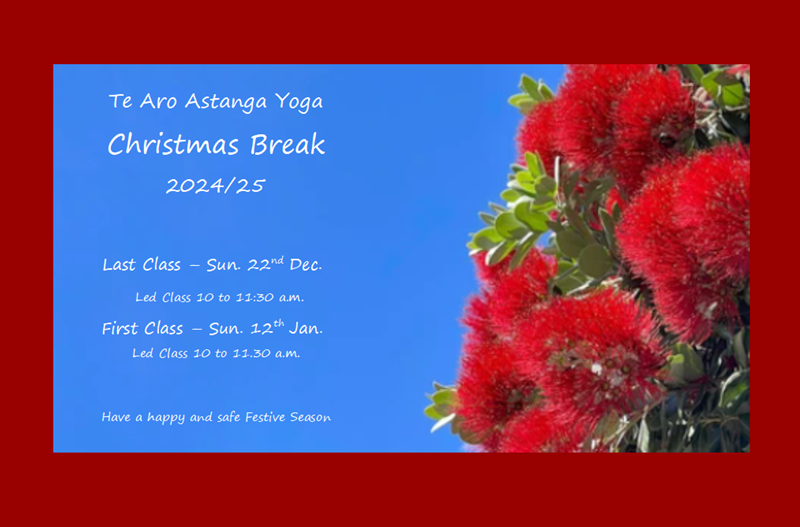I am constantly receiving emails and requests to attend or advertise workshops that involve learning Meditation or Kirtan or Chanting or Pranayama or any of several other yoga related activities. These are all well intentioned and I always put the posters up at the shala, however, I should clarify my personal position. Guruji always said “First, master asana”. He felt that without the necessary foundation that mastery of asana establishes, then there was little to be gained from other practices. My personal view is that if you feel deeply drawn to other practices then there is no harm and much good to be got from them. For myself, I find that in Ujjayi breath combined with Dristi and Bandha we experience a strong meditative practice and Pranayama. I have yet to feel the desire to explore these practices more deeply than I experience in my Ashtanga Practice.
Today, I wonder why this is. Partly it is my own nature. Partly it is the nature of the Ashtanga Vinyasa practice. Here is a great quote from one of the most experienced practitioners of Ashtanga in the world; Richard Freeman.
When someone says they teach Patanjali yoga, the eight limbs of yoga,
they are implying that not only do they teach asana and pranayama but
also samadhi and all of the stages of meditation and then the release, or
the self-realization through samadhi. My experience of Guruji is that this
is what his interest is. Practically his only interest in life is to fulfill the
whole yoga system. His emphasis is, of course, on intense asana practice
at first, but through that asana practice with the vinyasa methodology he
is also teaching the fundamentals of pranayama and meditation. And
much later on in his system, these particular parts are separated out and
refined. But in a sense he is teaching the eight limbs initially through
asana practice, and when one picks up the thread inside, we find that the
other limbs are very easy to practice. And so he is saying the first four
limbs of yoga—yama, niyama, asana, and pranayama—are very difficult,
but if you are grounded in them, the internal limbs are easy and occur
spontaneously, naturally.
I have always had a sense that Yoga is a practical science. What we practice on the mat is only one part of it, but it is through the strong physical practice that we discover the desire, patience and courage to unfold all the 8 limbs.
We live in a time when we are subject to a constant barrage of stimulation and distraction. Our diet, the water we drink, the air we breathe, are all full of toxins. A strong practice that generates inner fire and sweat is essential in this day and age to break down these barriers and create an environment where stillness can flourish.
The most common mistake is to get ahead of oneself. Guruji always said “Slowly, one by one you take…” So many of us are in a hurry and are looking to shortcut the process. Along the way, they are also forgetting the stages of life they must acknowledge and pass through. Before we even consider withdrawing, we must fulfill our obligations to ourselves and to those around us. It is while we are passing through these stages that the groundwork that Asana combined with Vinyasa gives us, should be practiced assiduously.

0 Comments